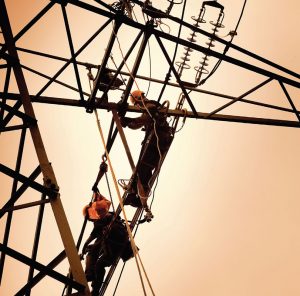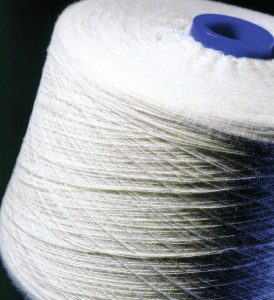
TW Special Report
What if?” It is the question where innovation begins, and few companies have asked it as often and answered it as well as DuPont™ and FilSpec USA.
Wilmington, Del.-based DuPont Safety & Construction — now a business unit of DowDuPont’s Specialty Products division — is a global leader in products and solutions that protect what matters — people, structures and the environment. The company enables its customers to win through unique capabilities, global scale, and iconic brands including Kevlar® and Nomex®; and has a century-long track record of innovation matched by few companies in the world.
Two of DuPont’s most iconic innovations, Kevlar and Nomex, date back to the 1960s. “Sometimes it is hard to think of something that has been around for 50 years or more as innovative, but that remains the case for both of these,” said Reiyao Zhu, DuPont Nomex technical guardian. Thanks to DuPont’s active commitment to continuous improvement for both products, “Nomex and Kevlar are still the very best for their intended applications,” she said
Nomex is a heat- and flame-resistant fiber that can react during an emergency. When the fiber is exposed to extreme heat, it undergoes a special reaction and captures more energy in the fabric, gaining valuable extra seconds of time to protect the wearer from heat transfer. From protecting people drilling underground to those rocketing into space, Nomex has numerous applications. Perhaps the best-known applications are in turn-out gear for firefighters.
Confidence in the ability of Nomex to provide thermal protection gives firefighters the assurance they need to be more effective, according to a DuPont case study. “Once you are in there and you see nothing but fire, if you start questioning your suit, you are going to start questioning your ability to do the job,” said a Philadelphia firefighter.
The properties of Nomex also protect workers in environments where flash fires are a possibility. “Nomex is used in coveralls to protect these workers,” Zhu said. “It is also used in situations where electrical arcs are a hazard, such as with electricians.”

While Nomex is known for thermal protection, Kevlar is renowned for toughness and ballistic-resistance. Originally developed for use in automobile tires, Kevlar has since become famous for bullet-resistant vests used by SWAT teams and officers engaged in high-risk law-enforcement activities. The living proof of its effectiveness is the more than 3,100 members of the International Association of Chiefs of Police/DuPont Kevlar Survivors Club® who survived potentially fatal or disabling injuries by wearing protective vests.
Always looking to make sure even more police officers go home safely to their families, DuPont frequently conducts tests to determine the capabilities of certain Kevlar weaves and constructions to absorb, contain and deflect energies from the high-velocity impact of bullets and projectiles to make the product better. Depending upon the risk inherent in their assignments, law enforcement officers can choose among Kevlar constructions that can stop small-caliber bullets up to .44 caliber and higher.
“A lot of people know about the law enforcement applications for Kevlar,” Zhu said, “but Kevlar is used in many other applications as well.” One of the more popular applications is for gloves that protect the hands of automotive workers, glass handlers, oil and gas drillers, welders, machine operators or others who have jobs that require hand protection, she said. Other applications range from tire sealant, to footwear and electronics cables.
With both Nomex and Kevlar, fiber and fabric construction are critical, Zhu said. What works as a fire retardant might not be as effective for arc protection. And for Kevlar, a vest designed to stop a bullet might not be as effective for a knife, and vice versa.
AFFOA: Advancing Manufacturing
A company-wide commitment to innovation is one reason why DuPont is a partner in the Advanced Functional Fabrics of America (AFFOA), a non-profit institute founded in 2016 as part of the U.S. government’s National Network of Manufacturing Innovation initiative to promote advanced manufacturing.
Seeded with $320 million in public and private funding commitments, AFFOA is headquartered in Cambridge near the Massachusetts Institute of Technology (MIT). Its mission is to enable a manufacturing-based revolution — the transformation of traditional fibers, yarns, and textiles into highly sophisticated integrated and networked devices and systems — by leveraging the geographic distribution of the domestic fiber and textile industry, academic research centers, and consumer product companies to weave a nationwide network of Industrial Members, Fabric Innovation Network (FIN) Partners, Startup Incubators and University Hubs.
“This unique partnership has the potential to create a whole new industry, based on breakthroughs in fiber materials and manufacturing,” AFFOA CEO Yoel Fink said. “The new fibers and the fabrics coming from AFFOA will have the ability to see, hear, and sense their surroundings; communicate; store and convert energy; monitor health; control temperature; and change their color.”
Specialty yarn spinner FilSpec USA recently joined AFFOA as a FIN member. The company was created in 2017 when Sherbrooke, Quebec-based FilSpec Inc. purchased Richmond Specialty Yarns in Ellerbe, N.C. Specializing in research and development for innovative technical yarns used in high-performance textile industry applications, FilSpec’s yarns boast thermal management, cut and abrasion resistance, protection against flames and sparks, moisture resistance, antimicrobial protection, as well as other capabilities.

“FilSpec is committed to serving the American market by providing innovative solutions, reliable operations and a level of quality that constitute the foundation of FilSpec’s identity,” said Dominique Quintal, vice president, sales and marketing.
“Originally, we became involved with Richmond Specialty Yarns on a commission basis, and in 2009, FilSpec became the controlling shareholder in the company,” he said. “We completed the purchase of Richmond in 2017. With what is now FilSpec USA, we can take advantage of U.S. trade agreements to enable us to sell a range of specialty products. We are now spinning yarn in the United States and selling to Mexico for applications that will be used in Mexico. Same thing for Central American countries as part of CAFTA. As for innovation, it is not something we are doing because it is trendy. It is in our DNA, and it is what we will continue to do.”
The world has moved on for the textile industry Quintal said. What once worked will likely not ever work again. “In our business, we cannot cling to the past. Even if we did not have competition from those low-cost countries, we would still be operating with the same mindset, of being innovative and coming up with new products for new applications. And we want to work with partners, suppliers and customers that share the same vision.
“Innovation means constant reinvention,” Quintal said. “We usually don’t expect a product to last more than five years. Eventually, almost no matter what you produce, the only way you are going to continue to be profitable is to reduce cost. And then you are back in the battle with low-cost countries. Instead, you have to come up with new products for new applications and keep doing it over and over.”
“We have learned that we must innovate to survive,” he continued. “We didn’t have a choice. The only way forward for us was to specialize in yarns for high-value technical fabrics.”
Quintal foresees a continued period of growth for innovative North American companies. “We have the knowledge and we have the expertise, that is our biggest advantage over textile companies from other parts of the world.”
November/December 2018




